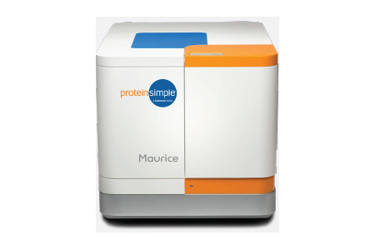Application Of Maurice CE-SDS For Biopharmaceutical QC Workflows

Protein identity, stability and purity are critical quality attributes of biopharmaceutical molecules that need to be closely monitored during the early phases of process development and late-phase batch lot release testing. Capillary electrophoresis (CE)-based methods can be efficiently applied for analytical quality control (QC) testing and provide a number of key advantages, including high separation efficiency, accurate quantitation, short analysis time, low waste generation and a diverse range of applications. As a result, CE methods are increasingly applied in the QC environment,
replacing traditional slab gel and/or chromatography approaches.
Analysts performing CE may use an internal standard (IS) during batch runs for various reasons, including an effort to reduce sample injection variability, to correct for discrepancies in migration time and/or as a mobility marker. However, as an added external component, the IS also poses a risk for interfering with the separation of your test sample, which may result in uncertainties during data analysis and affect the reproducibility of results. Therefore, an alternative means for standardization is highly desirable.
In this application note, Maurice™ CE-SDS is evaluated on assay performance and method validation characteristics that are important for QC analytical testing using three reference molecules. We demonstrate the application of Maurice CE-SDS to a QC-specific workflow that eliminates the use of a commercial IS, thereby removing potential concerns such as introducing contaminants to test samples and interfering with subsequent analyses.
Request A Quote
Get unlimited access to:
Enter your credentials below to log in. Not yet a member of Cell & Gene? Subscribe today.
